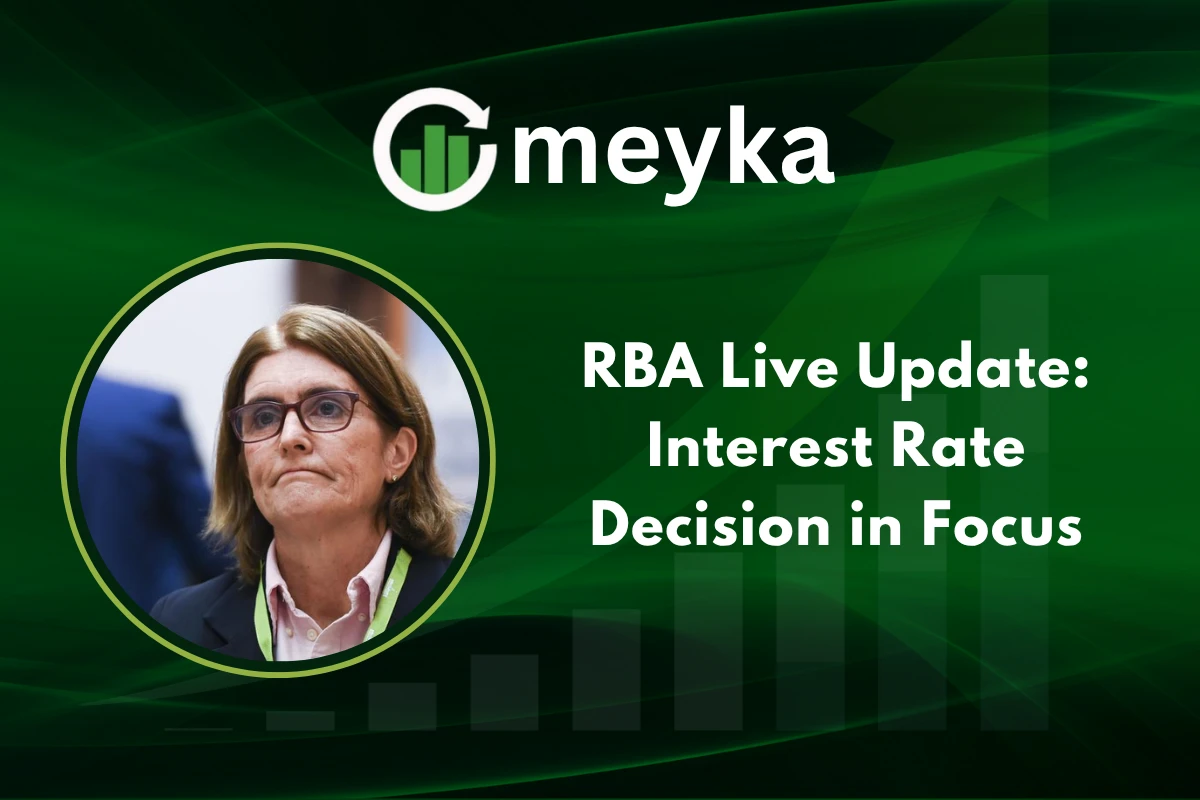RBA Live Update: Interest Rate Decision in Focus
The RBA held the cash rate at 3.60% today, keeping monetary policy on pause for now. Markets had expected a hold, but traders and households still watched closely for guidance on future moves. The decision came with a press conference scheduled for 3:30 pm AEST, where Governor Michele Bullock answered questions about inflation and the economy.
RBA keeps markets on edge with interest rate decision
The Reserve Bank’s board decided to maintain the current stance after weighing inflation progress and labour-market signals. The RBA noted inflation has eased but remains above the 2–3% target band in some measures. The bank signalled it will be data-dependent about the next steps in the cycle. That left investors parsing the statement for hints on timing and size of future cuts.
Why did the RBA hold the rate?
The RBA sees cooling inflation but still wants to be sure price pressures are truly under control. Holding gives the bank time to watch incoming data without reversing prior policy.
Market and investor reactions to the RBA
The ASX opened slightly firmer on relief that the RBA did not surprise markets. Banks and mortgage-linked stocks reacted to commentary about household borrowing costs. Traders used options and short-term hedges ahead of the governor’s press conference.
On X, market commentators flagged a cautious tone; some called the decision reasonable, while others said the RBA left open the chance of more easing later in the year.
What traders are saying
Short posts on X reflected mixed sentiment. Some traders noted that the RBA’s timing gives banks time to plan, while others said the statement lacked clarity on the bank’s next move. These quick takes often move intraday flows and add to volatility around major ASX names.
Why is the RBA under pressure to act?
The RBA must weigh two clear forces. First, inflation: headline inflation has eased from its peak but service prices and rents still matter for household budgets. Second, growth and mortgage stress: higher rates earlier in the cycle have left many households sensitive to repayment costs. That mix makes timing the next rate cut tricky. The RBA’s public note emphasised caution and data dependency.
What is the RBA trying to avoid?
The bank wants to avoid cutting too soon and risking inflation re-acceleration, while also avoiding holding rates so long that mortgage stress and economic weakness deepen. It’s a tight balance.
What does this mean for Australian households?
For borrowers, the immediate impact is limited: a hold means no immediate rate relief. But the RBA’s message that cuts may come later if data continue to cool will be watched closely.
Mortgage holders hoping for quick relief may feel disappointed today, while savers will continue to face modest deposit rates. Overall, the bank signalled patience rather than urgency.
Practical advice for households
If you have a variable mortgage, consider talking to your lender about options. If you are saving, remember that future cuts could lower deposit yields. The RBA’s cautious approach means the timeline for cuts is still uncertain.
RBA in a global context
Global central banks are on varied paths. The US Federal Reserve, ECB, and BoE have shown differing degrees of easing. For the RBA, external factors matter: commodity prices, China’s growth, and global inflation trends all weigh on the outlook.
A weaker global backdrop or softer commodity demand could make it easier for the RBA to cut later; strong global inflation would push it to wait.
How do global events shape the RBA’s decision?
Short answer: The RBA watches global inflation, trade and commodity markets closely. A global slowdown can ease domestic inflation pressures; a global flare-up can force the RBA to keep rates higher for longer.
How markets are preparing for volatility
Investors are focusing on three things: the precise wording of the RBA statement, Governor Bullock’s tone at the press conference, and the coming economic data, such as jobs and CPI updates. Bond traders will watch the yield curve for shifts that indicate market odds of cuts. Currency desks are tracking the Australian dollar, which moved modestly on the news as traders digested the RBA’s path.
Hedging and positioning
Many funds used short-dated hedges to protect portfolios during the press conference. That means volatility can spike in both equities and bonds around live comments. Retail investors should be prepared for intraday swings.
What data will matter next?
Key updates include employment and wage data, next month’s CPI prints, and retail spending. FocusEconomics expects the RBA to be cautious but notes consensus forecasts point to further easing later in the year if inflation remains contained. Market participants said data over the next two to three months will be decisive.
When could the RBA cut rates?
The RBA has left the door open to cuts later in the year, but timing depends on incoming inflation and labour data. Markets are pricing some chance of easing in the coming months, not days.
The policy conference and forward guidance
The RBA will publish its monetary policy statement and hold a press conference where Governor Bullock will take questions. Analysts expect questions on wage growth, rental inflation, and the path for the cash rate.
Clear guidance could calm markets; ambiguous answers could increase volatility. The RBA’s website shows the cash rate target and the timing of the media conference, which markets will watch closely.
Conclusion: What comes next for the RBA
Today’s RBA decision is a pause, not an end. The bank kept the cash rate at 3.60% and emphasised data dependence. That keeps markets alert: if inflation keeps easing and jobs soften, cuts could follow; if price pressures rework, the RBA will hold firm.
For households and investors, the clear signal is to plan for uncertainty, watch incoming data, and expect the RBA to act only when it sees a durable path back to 2–3% inflation.
FAQ’S
The RBA interest rate decision directly affects mortgage repayments, business loans, and the Australian dollar. It also signals the bank’s stance on inflation.
The RBA kept rates steady, holding the cash rate as markets waited for signs of future hikes or cuts depending on inflation and growth data.
For households, the RBA decision determines mortgage stress levels, disposable income, and cost-of-living pressure. A hold or hike changes monthly budgets significantly.
The ASX dipped while the Australian dollar saw volatility after the RBA announcement, with traders debating how long rates will remain restrictive.
Analysts expect the RBA to stay cautious, balancing high inflation with slowing growth. Markets are split on whether a rate cut could come in early 2026.
Disclaimer
This is for information only, not financial advice. Always do your research.






